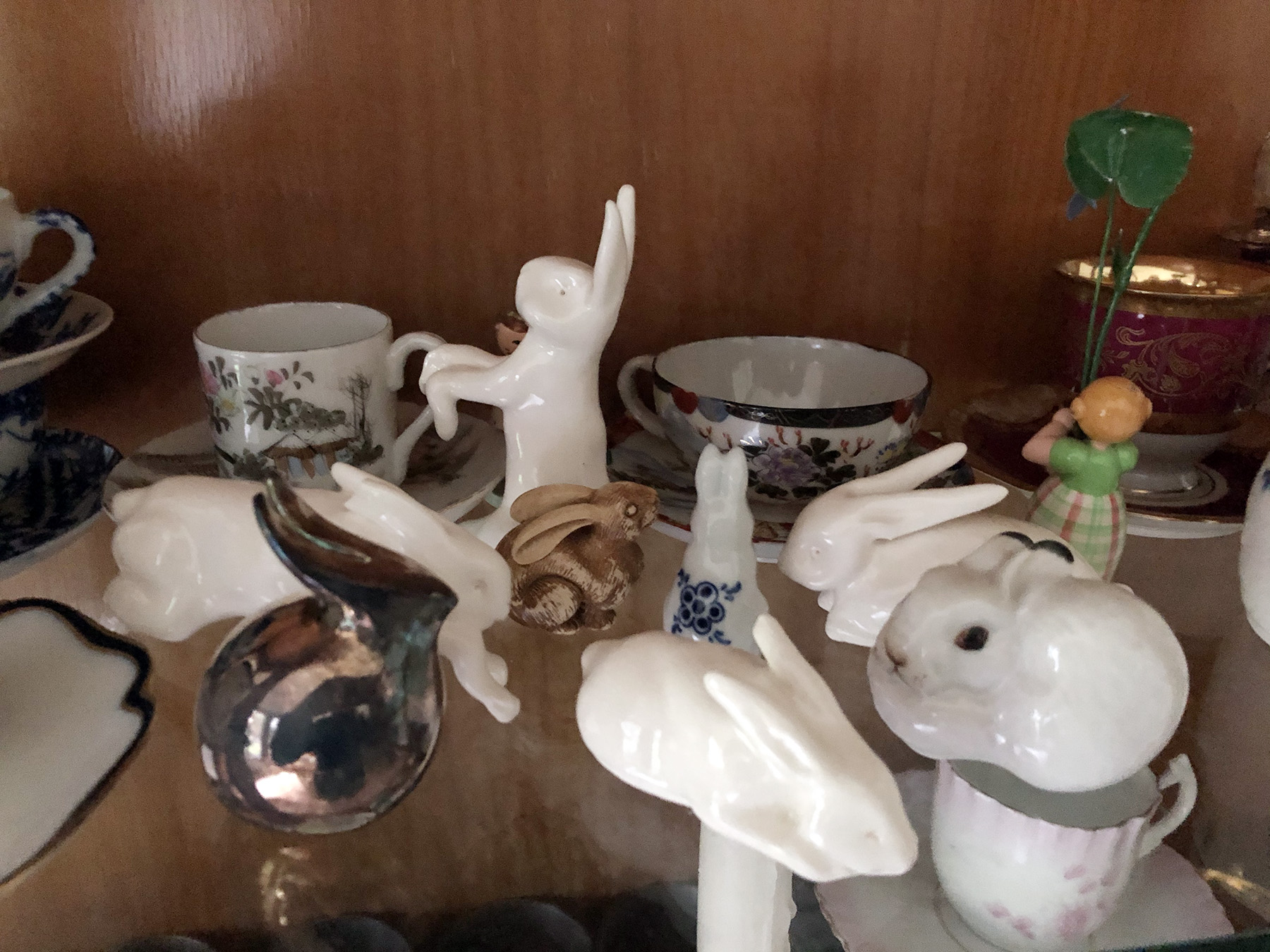Installment #2 of a visual representation of current ruminations. Meet the March Hares.

The photograph’s central characters are a bunch of bunnies, looking disoriented in all kinds of directions, with an upright sentinel standing guard in the background. They are surrounded by tea cups – March Hares love themselves a tea party after all – and a little doll – Alice, exhausted? – lies prone behind them. A candle burnt down to a stump stands in front. The silver bunny is tarnished, the Netsuke one has a scratched coat and the porcelain ones have postures and facial expressions that remind of the German compound word Angsthase (fear bunny,) our equivalent for Scaredy Cat.
Life-threatening illness does that to you. Having prided yourself all your life of not being a scaredy cat, you find yourself being an Angsthase, hyper-vigilantly monitoring every blip in your body, noticing every scrap of tarnished decay, crouching paralyzed, directionless among your fears, too embarrassed to voice them all. A burnt down candle? Why, life is about to melt away. A doll keeled over? A sign, an omen! Everyone looking in different directions? Loneliness personified. The world interpreted through the looking glass of experienced disaster.
But hey, it’s March! Bunnies congregate (once they’ve relearned to socialize after the eternal Covid isolation) to frolic, never mind to engage in ever more pleasurable activities. In fact Mad as a March Hare is an English idiomatic phrase first found in the 16th century, referring to the strange and excited behavior of hares during the breeding season. Spring is around the corner, and the historical morphing of March hares into Easter bunnies is linked to the empowering (if perhaps illusory) belief that light can rise from the darkness, life from death.
Let’s look at certain forms of over-excitability as a life force then, not mental decline. And let’s remind ourselves that the famous tea party for Alice forced a serious re-evaluation of philosophical concepts, time included, offered dryly by the March Hare. Strange new worlds we might find ourselves in, but they do allow for re-negotiation. What was important might no longer be, what wants to be pursued might have changed. A fresh start then, rather than paralysis, just like spring in its affirmation of renewal.
Maybe if I say it often enough, I might actually start to believe it……
Here is Beethoven’s Violin Concerto #5 – Spring Sonata
Alternatively, you can peek at a mad, mad version of the tea party… and ingenious but hard to process opera by Unsuk Chin.






Sara Lee Silberman
Simply put, the bunnies et al. and then the first two paragraphs describing and interpreting what they evoke are, for me, beyond masterful and touching in both their honesty and perceptiveness.
Martha Ullman West
Terrific post, words, music and needless to say the photo. But where is the dormouse, I ask? A symbol it occurs to me in the context of this post of healing, of sleeping your wounds, illness, sadness away. The March hare, not to mention Alice, awakens you to the burgeoning spring, life is renewed, life goes on, and you will march through the forests again and show us new wonders.
Steve T.
My goodness, that ‘opera’ is frightening. Perhaps because I kind of recognize, identify something of myself in it. Scary, Friderike, scary.
Carl Wolfsohn
Hare raising!